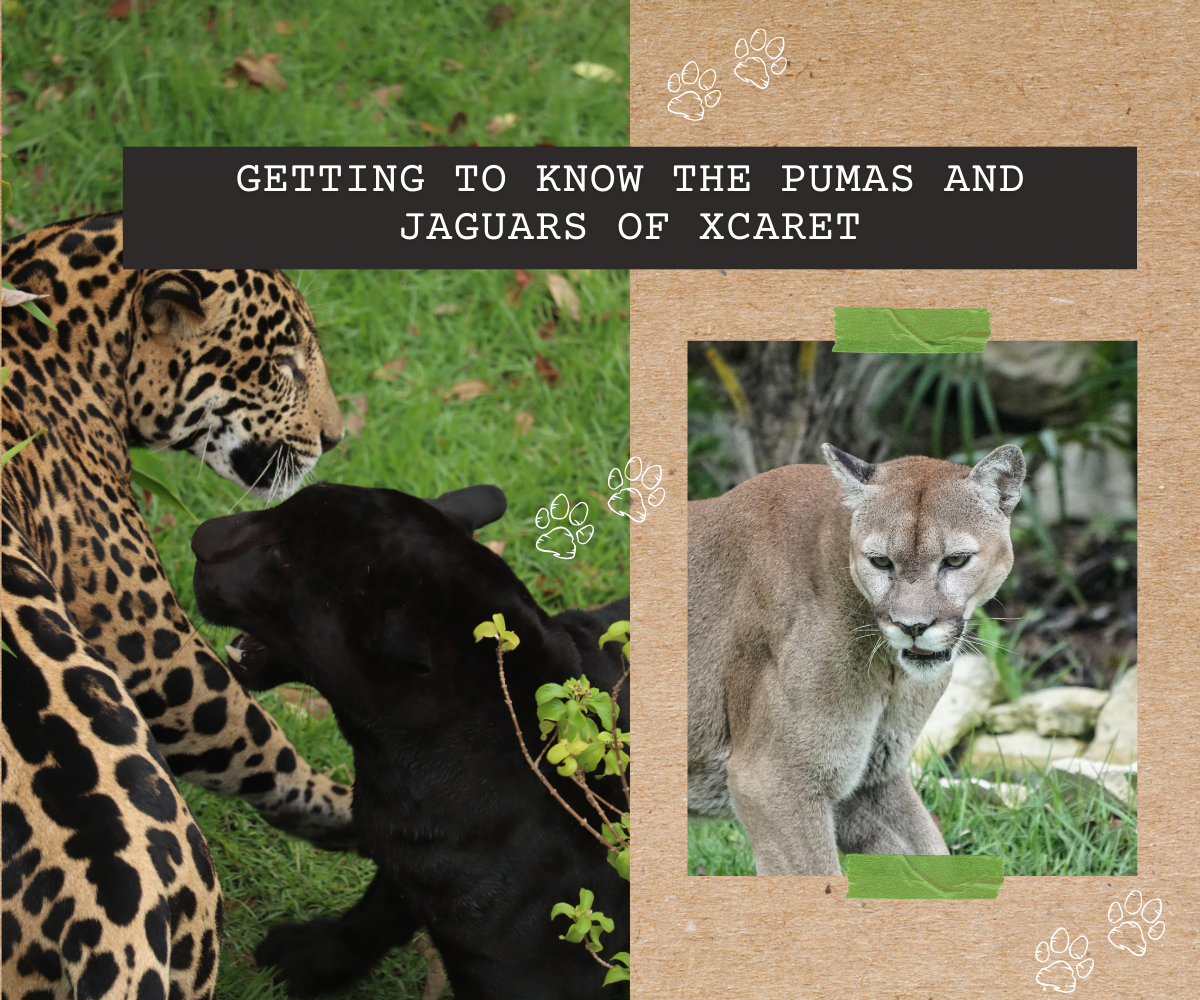10 Things you didn’t know about Xcaret’s macaws
January 07, 2025
They’re colorful, amazing and very noisy
What should you know about the macaws?
We know, they caught your attention the moment you took a step on the Park; and you loved them. Macaws are so captivating; with their plume full of colors and their funny swagger. We’re going to tell you 10 things you probably didn’t know about them.
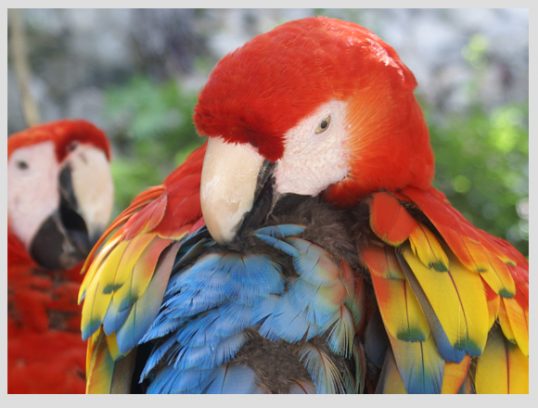
1. How many macaws live in Xcaret?
All over the Park we have 885 specimens under our care. There are different subspecies; the ones you can see at our facilities are the Scarlet macaw (Ara macao) and the Military macaw (Ara militaris).
2. They need a lot of care
Normally, macaws live near 40 years; in captivity they can reach up to 70. During this time they demand much attention. The diet, for example, includes kibbles, fruits and a mix from smashed corn and vegetables; these are distributed in three meals per day. In the breeding season special supplements are added to the food.
Keeping them entertained is also a major task: small pieces of wood and toys are placed near the macaws, so they can bite them. Otherwise the active birds could rip off their own plumes or bite other macaws. Likewise, caretakers keep an eye on behavior anomalies (such as vomit, diarrhea or rare sadness): this way they can diagnose and treat diseases.
3. They have specific tasks…
After a macaw is born, the responsible departments decide the area where will be allocated: breeding, flight or exhibition. The first group will help the Xcaret’s Conservation Program, later they will be released in Veracruz or in the Chiapas forests. The birds for flight labors are the ones you can see at our show México Espectacular and other events; while the exhibition birds are spread on hangers all over the Park or upon our photographer’s shoulders.
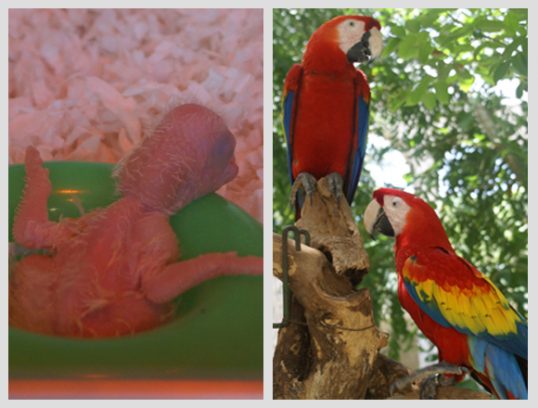
4. …and the tasks are not randomly assigned
For the selection, caretakers observe factors such as lineage, energy, sociability and character. The first split happens even before the bird’s birth: every macaw in Xcaret participates in a genetic study, which determines the most suitable nestlings for the reintroduction project.
The second filter dictates which activities will they do in the Park. Nanci Vargas, Training Chief, tells us how macaws for flight tasks are selected: “They have to be very sociable; we choose the less nervous. If they’re nervous, it takes more time to educate them, and when they are outside, they become scared easily, sometimes they fly far”.
5. Macaws are romantic and very loyal
They are monogamous species, which means they have only one couple throughout their lives. Their body language shows us clearly when they’ve started to form couples: the pair separates themselves from other birds; they begin preening, feed each other and show dilated pupils.
Xcaret Staff try to keep the couples together: “If you try to separate them, they start to scream, looking for the other one (…) if they are distant, sometimes they escape to locate their partner; they always do it, even if the macaw is on the other side of the Park”, says Nanci.
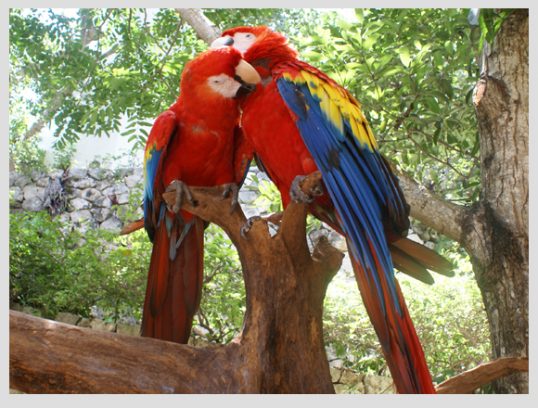
6. Occasionally they are not so obedient
Education for flight tasks is harder because the macaws have to learn to come back. Using conditioning with food and prizes, caretakers try to create a close alliance between the bird and them. However, sometimes they have trouble and the macaws fly away from Xcaret.
When this happens, we start a search that can last days and cover big areas. “Once I had to walk nine days, non stop, from early morning until night. We don’t stop until we find the bird, is like a lost child for us”, explains Nanci.
7. México Espectacular demanded a spectacular training
The macaws you see on our big show have only one task: to fly. Their diet contains even more proteins; also they have a prolonged rest. They are special because they sleep during the day and fly at night in the show.
The birds begin flying short distances, over time the routes are longer. They have to recognize the stage to practice their movements on it. Macaws had to be sensitized to music, lights and visitors; so that we are not a distraction for the birds. It was a long and complicated process.
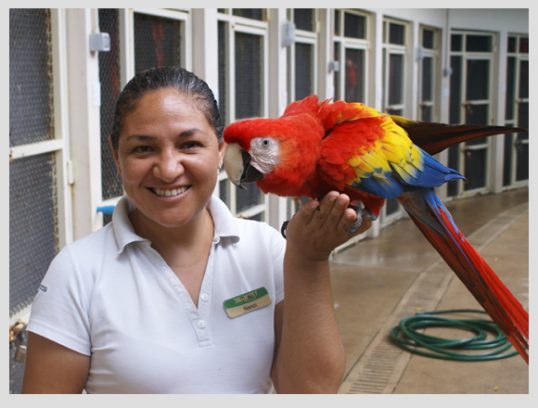
8. They are sociable and intelligent, but be careful!
The macaws at our Park are very social species: they have strong bonds with their caretakers. They are habituated to contact with visitors and people’s noise. However, there is a period where their mood changes and you have to be careful.
Karol Sepulveda, Breeding Chief, explains that during the reproduction season the birds get a little bit aggressive: “They protect their nests (…) if an unknown person comes to the area, they scream a lot. If you try to touch them, they could bite you”.
9. Breeding in Xcaret is a big success
In 1993 Xcaret began a breeding program in order to repopulate the rainforests in Veracruz and Chiapas. This major labor earned Xcaret two Guinness World Records, in 2009 and 2013, for the most macaws born in a year in a single facility with 105 and 132 nestlings, respectively. Currently, between 80 and 100 macaws are born per year.
In their natural habitat, macaws lay two or three eggs per year, while under our care they lay three or four, twice per year. Karol Sepulveda says these improvements are thanks to the treatment given to the nestlings and their parents and also because breeding facilities are better and very comfortable. During the process, macaws have a special diet too.
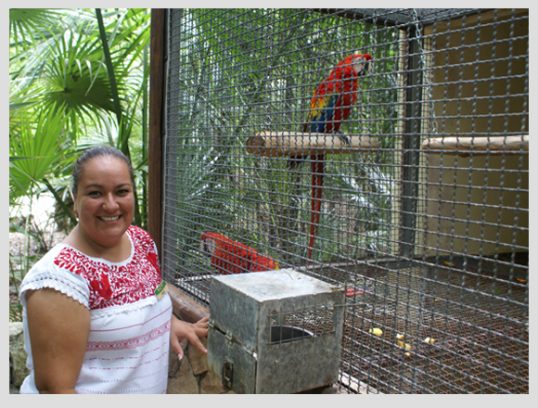
10. Life in freedom also needs training
The breeding program initiated by Xcaret is more than reproduce and release macaws. The nestlings destined to this area have a preparation before their independence. This training happens in a special habitat, which simulates the environment of their future home.
In this Aviary they take coexistence and survival lessons. For example, they are introduced to other species, like eagles or vultures, and other animals, like dogs. Flee from poaching is an important course here: caretakers dress themselves as hunters and scare the macaws with nets and sacks.

As you can see, these birds are very special and there’s a great story behind them. For us, they are an essential part of Xcaret; we enjoy their presence and joy.
Tell us, how was your experience with the macaws at the Park?
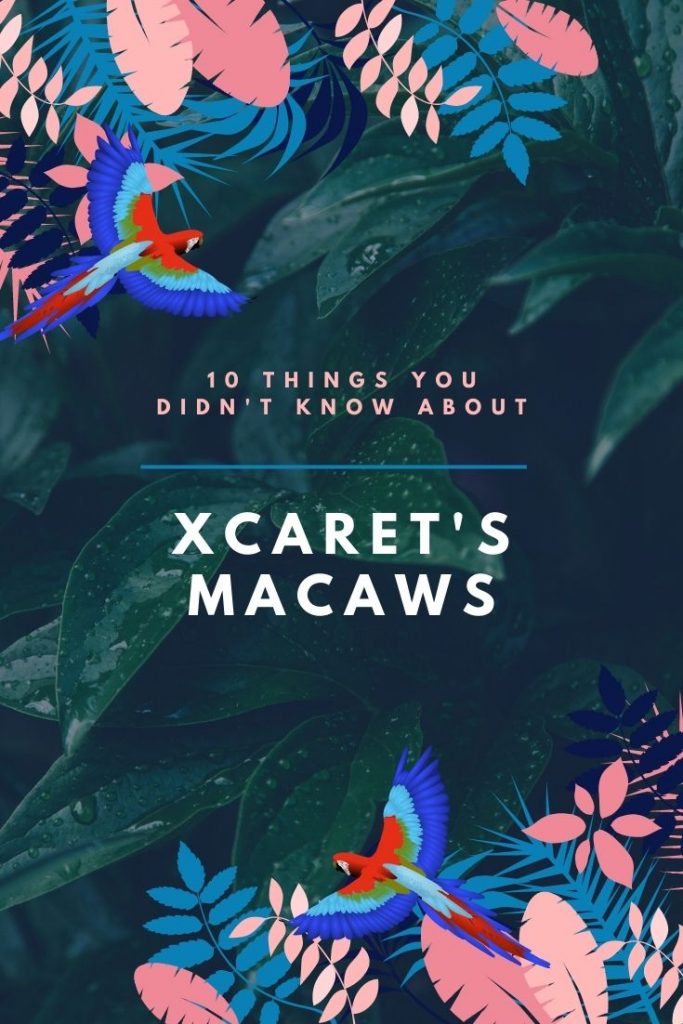
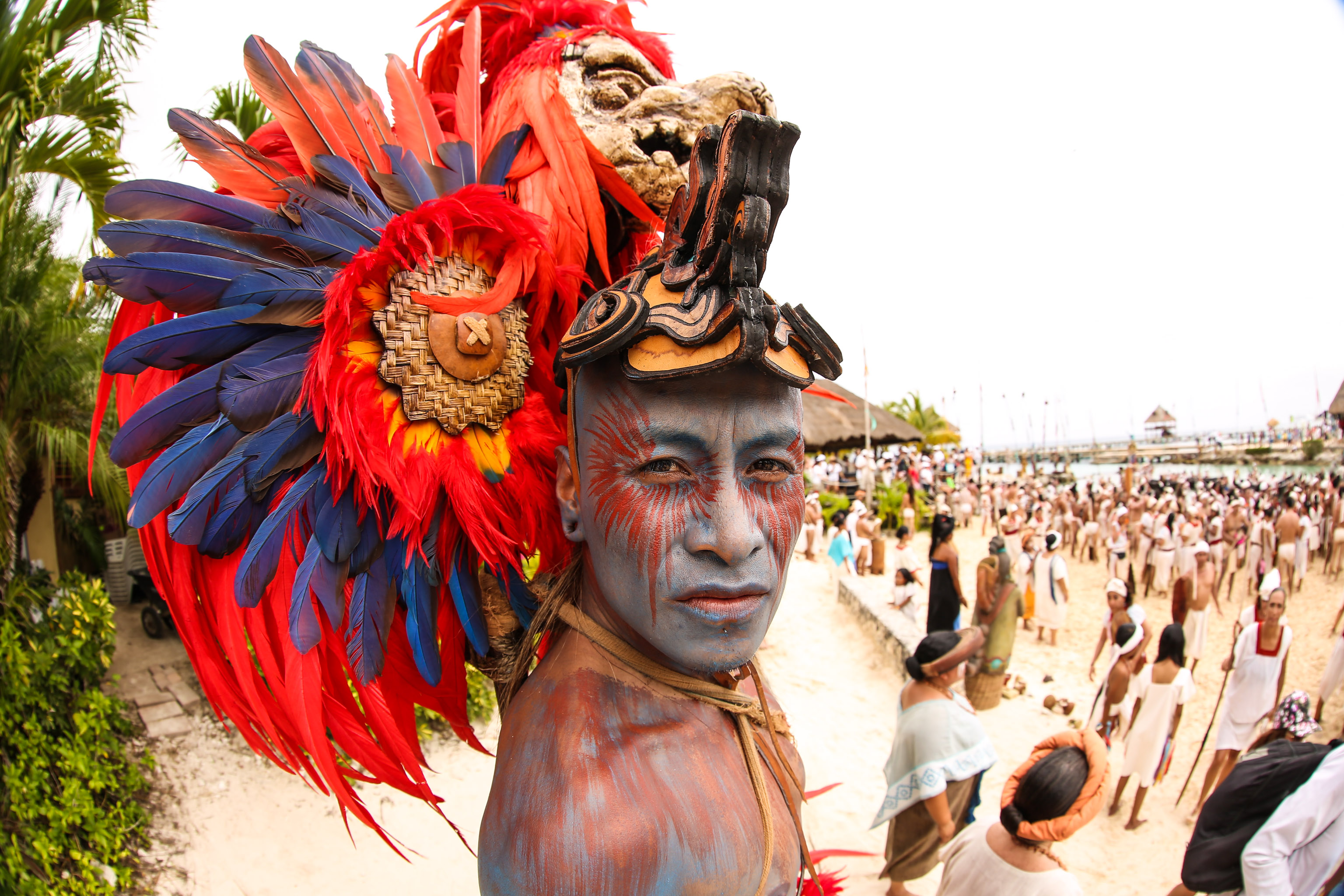
Mexican-Food lover, sports fan. I like photography and red macaws.
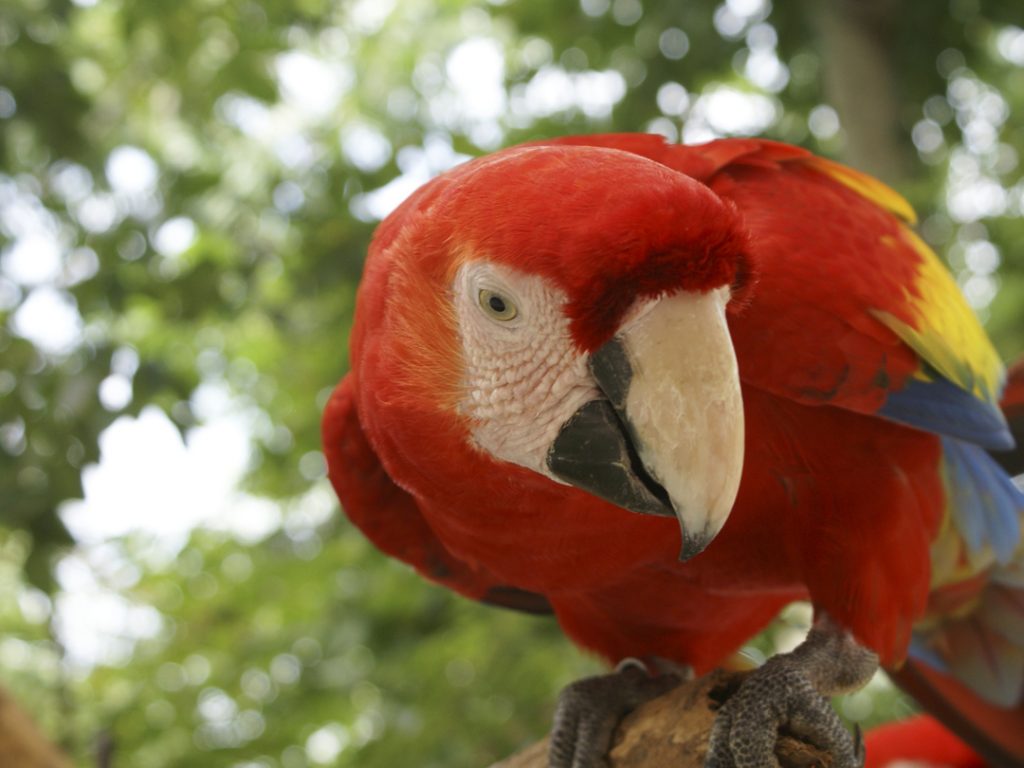
Posts Relacionados
Grupo Xcaret
Hotels



